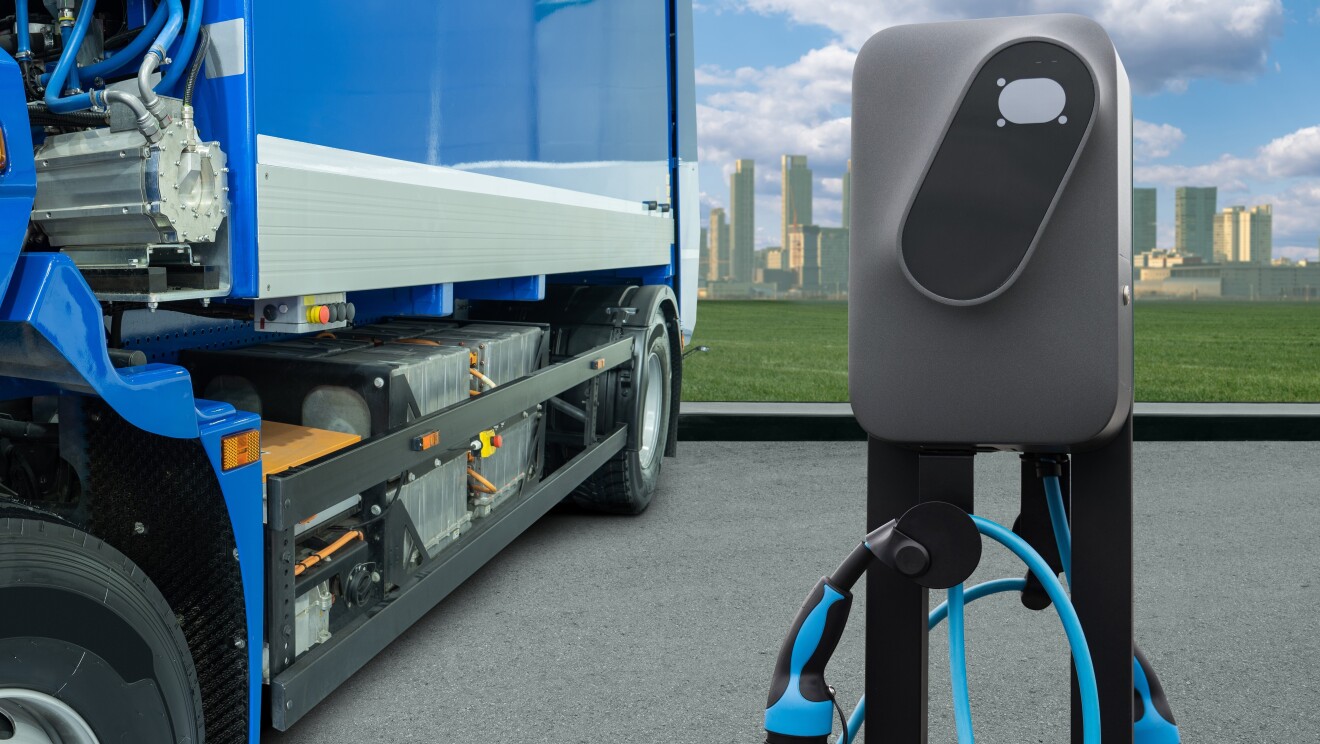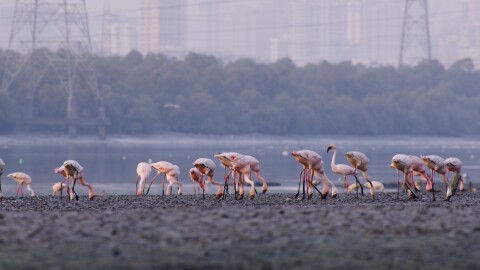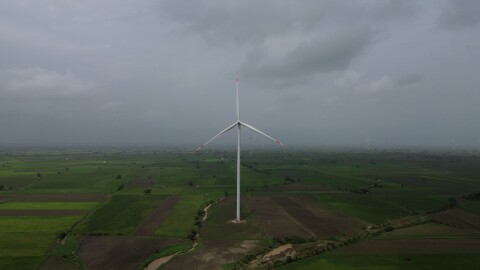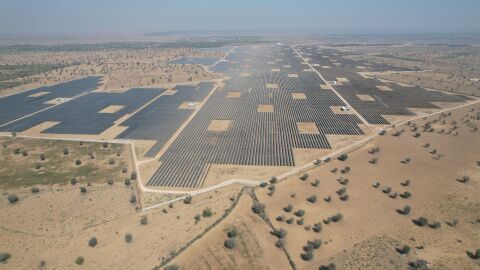Amazon has announced a new 198 megawatt (MW) wind farm in Osmanabad, Maharashtra, India, bringing the company to 50 wind and solar projects across India and surpassing 1.1 gigawatts (GW) of renewable energy capacity. In addition to being the largest corporate buyer of renewable energy globally—a position that Amazon has held since 2020—Amazon is also the largest corporate buyer of renewable energy in India, according to publicly-available data and Bloomberg New Energy Finance.
Amazon’s wind and solar farms have helped generate an estimated $349 million (INR 2,885 crore) in economic investment for India’s communities between 2014–2022. The projects have also contributed approximately $87 million (INR 719 crore) to the country’s total gross domestic product (GDP) and supported more than 20,600 local full-time equivalent jobs in 2022 alone, according to a new economic model developed by Amazon.

“Rapidly scaling renewable energy is one of the most effective strategies to address climate change, and these efforts can be especially impactful in India, where the country’s leaders are focused on transitioning the country away from fossil fuels,” said Abhinav Singh, vice president of Operations at Amazon India, who noted that Amazon’s wind and solar projects will help power the company’s operations with 100% renewable energy by 2025, while also bringing jobs and economic benefits to local communities. “We’re eager to continue contributing to India’s economic and environmental goals as part of Amazon’s commitment to become a more sustainable business.”
"We welcome Amazon's renewable energy investments in India as it encourages more corporates to purchase renewable energy in the country, accelerating our path to meet our 2030 goals,” said Shri Dinesh Dayanand Jagdale, joint secretary of The Ministry of New and Renewable Energy, Government of India. “India has already delivered on its Nationally Determined Contributions target of 40% capacity from renewable sources ahead of schedule. We are also leading towards becoming one of the largest solar module manufacturers in the world with one of the largest wind energy manufacturing ecosystems as well. India remains focused on achieving the NDC goal of 50% capacity from renewable energy, and we are pleased to see our renewable energy sector is enabling corporates like Amazon to meet their own 100% renewable energy goals in the country.”
Amazon’s clean energy commitment to India
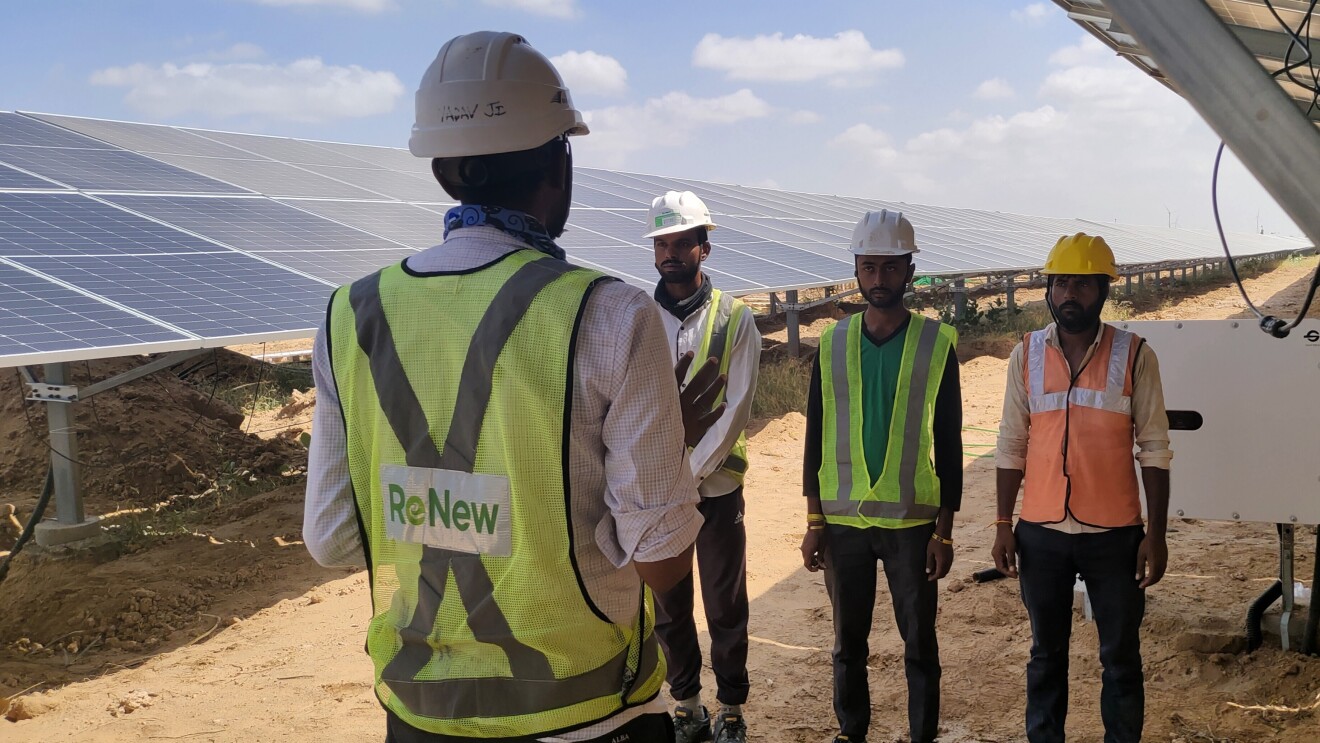
The wind farm in Osmanabad is the seventh utility-scale renewable energy project announced by Amazon in India within the past year. The company has also announced a total of 43 rooftop solar projects, which are helping to power local Amazon facilities. Once all 50 projects are operational, they are expected to generate the energy equivalent of powering more than 1.1 million homes in New Delhi each year, and will provide clean power for Amazon’s data centers, logistics facilities, physical stores, and corporate offices.
Over the past several years, Amazon has collaborated closely with policymakers, regulators, and broad groups of industry stakeholders to expand corporate renewable energy procurement options in India, bringing these new projects online and enabling others to also scale new renewable energy projects.
Contributing to the greater good in Rajasthan, India
Awadhesh Kumar is a senior engineer at Amazon Solar Farm India–Rajasthan Jaisalmer, a solar power plant located near Jaisalmer in the border state of Rajasthan developed in partnership with ReNew.

The development of the solar plant by ReNew has brought growth to the area. “Residents have a continuous source of income, education opportunities for kids have improved, and local businesses are getting a boost,” Kumar said. “The community has flourished collectively because of ReNew’s development of the solar farm.”
But it’s the broader purpose of the work that inspires Kumar and those around him.
“We are at the forefront of tackling climate change,” Kumar said. “Each day, I strive to do better, because I know that my work is making a real difference in the world. Working for a renewable energy company means I, along with fellow ReNewers, contribute to the greater good of the environment. This makes me proud of the job that I do.”
Amazon’s commitment to sustainability
In June, Amazon CEO Andy Jassy announced the company’s commitment to invest $26 billion (INR 2,14,942 crore) in India by 2030. This includes the $12.7 billion (INR 1,05,600 crore) by AWS to be invested in cloud infrastructure by 2030. AWS’s cloud infrastructure in India includes two AWS Regions located in Mumbai and Hyderabad. Indian customers who migrate their IT workloads to AWS from on-premises can lower their workload carbon footprint by up to 96% once AWS is powered globally with 100% renewable energy by 2025.
AWS tools and solutions are also helping other customers in India monitor their renewable energy operations. For instance, Greenko Group, a renewable energy solution provider in India, is using AWS to analyze the health and performance of its 2,200-turbine wind fleet in real time, using artificial intelligence (AI), machine learning (ML), Internet of Things (IoT), and data analytics.
Amazon is committed to reaching net-zero carbon by 2040 through The Climate Pledge, which now has more than 400 signatories, including nine Indian companies—BluPine Energy, CSM Technologies India, Godi, Greenko, HCL, Infosys, Mahindra Logistics, Tech Mahindra, and UPL. Amazon also continues to transform its transportation network by electrifying its delivery fleet and has more than 6,000 electric vehicles in its India delivery fleet, making deliveries in more than 400 local cities.
In addition, Amazon is investing $15 million in nature-based projects to support communities, climate resilience, and biodiversity in the Asia-Pacific (APAC) region, and the first $3 million from the fund’s APAC allocation will support projects in India—beginning with a project in the Western Ghats to plant 300,000 trees—creating carbon sinks as well as enhancing wildlife conservation and livelihoods.
Learn more about Amazon’s renewable energy work.




